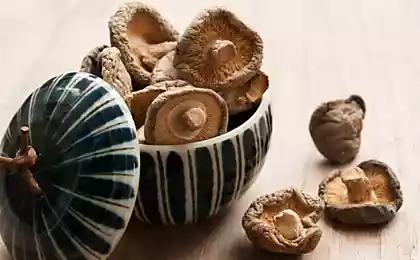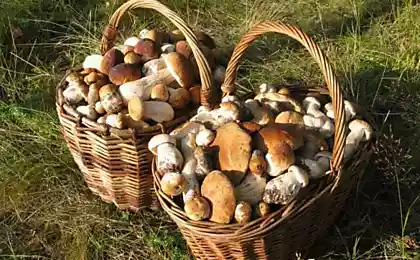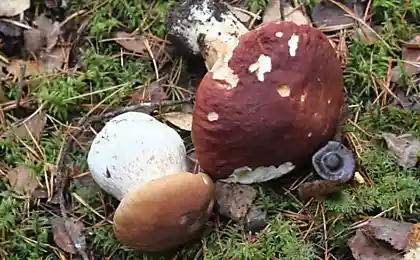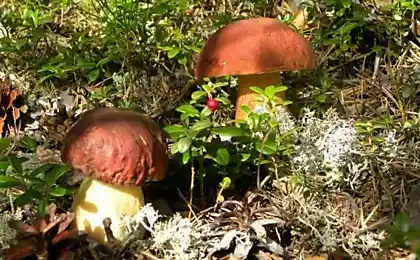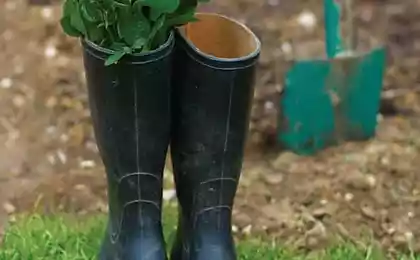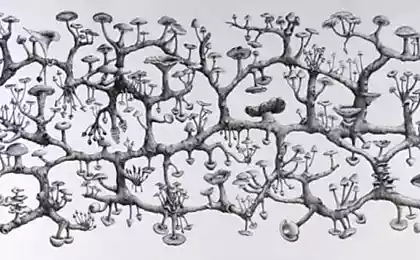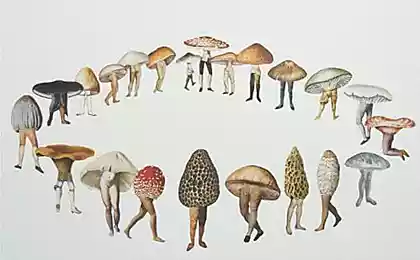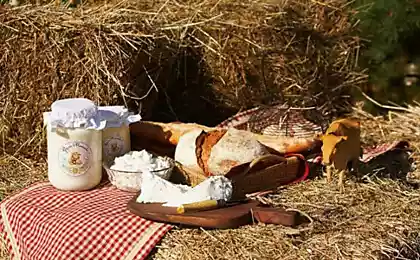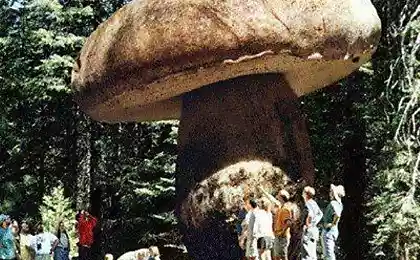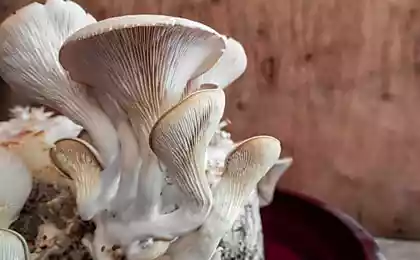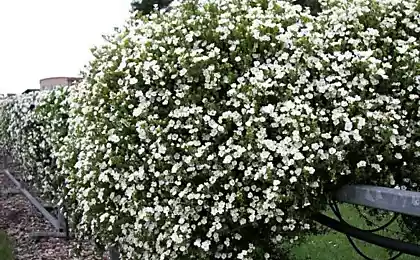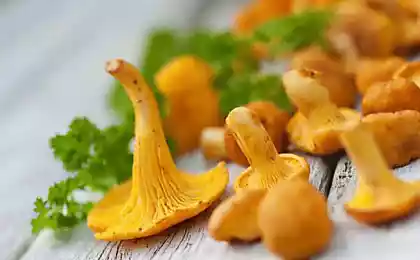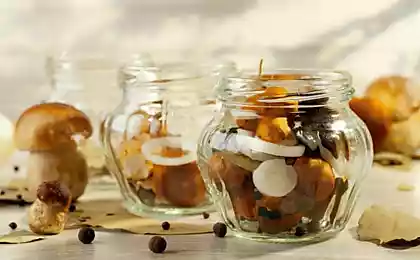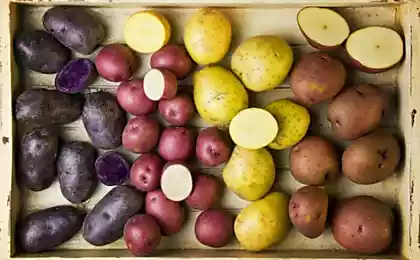724
How to grow wild mushrooms at the site
Plant mushrooms. "Who will plant them, that's mushrooms". But to put them can be tested in practice. The fact that fungi reproduce in two ways. With mushroom (there is nothing we can do, the main thing is not to harm). And spores that ripen in the hat.
The well-known "fairy ring", when the mushrooms grow like a ring. The explanation is simple. Hat round, from the earth far, disputes pours. The following year, the fungus grows a small dense ring. And again every dusty by itself. And after 10-15 years, the ring reaches a diameter of 1-2 meters. This effect should be used, especially for propagation of fungi in the woods at their summer cottage Alpine slide.
Twenty three million five hundred seventy one thousand six hundred eighty two
This is done simply. As a rule, the mushroom having found flabby old or worm-eaten mushroom just leaves it on the ground, and even flip the hat upside down. The point of this absolutely no. I'm doing so. Take the hat and put it on a spruce branch, or prick dry. At the same time killed two hares.
First, the hat does not rot, and dries, the spores ripen and dust on large areas. You see, and tied a few new lesions spawns. Second, the mushroom dries. In winter, the most hungry time of the animals, you see, and will appreciate a rabbit, squirrel or bird.
You work 5 seconds, and the benefits great. If each mushroom at least 20-30 mushrooms "pinned" for the trip, the mushrooms will become more and more, not less and less. Leave mushrooms to their descendants, do not deprive them of this pleasure. The source is a magazine "Do it yourself»
Mushrooms on the site
Hard to believe, but in the garden you can grow up to 30 kinds of various fungi. Of course, some of them planted in our gardens on their own, but some of them we just don't notice, others kick with their feet, considering them as toadstools. However, despite a strong commitment to fellow white mushrooms, milk mushrooms and the like to the forest, some of them growing literally under our feet, edible and delicious, but unfamiliar, can not hurt to reconsider.
In Europe, ryadovka Milovanova is considered one of the most delicious mushrooms. On our site it grows on potato ridges. The dissonant name of a dung beetle does not diminish the value of this fungus able to grow on the lawn, in a shady place on manured garden soil. Roasted taste beetle white hairy leaves behind the most delicious mushrooms. The composts readily grow mushrooms-umbrellas, collavini, several kinds of mushroom. One hat umbrella variegated enough to fill a pan. And what to say about shiitake — the healing properties of this mushroom with the name of the Japanese legends.
My own practical experience confirms that in the garden it is possible to grow forest mushroom — white, boletus, greasers, and others.
Very often in gardens appear to be a field or forest mushrooms by self-seeding. The pig-face, thin, often found in the beds of cucumbers, if close grow: birch. We have the lawn fertilized with a fertile substrate, the self-seeding grow two kinds of edible mushroom Platea. Sometimes in the gardens there are abundant podkolodnii. skipity, morels and other mushrooms.
In addition to forest and field mushrooms in the garden under the open sky successfully grow wood mushrooms -different types of oyster mushrooms. honey summer, autumn and winter, and hard to believe. — shiitake. The compost beds to grow mushrooms and collavini. And now let's take a look at the mentioned fungi and methods of their cultivation in the garden.
Makarenya mushrooms
It was the mushrooms, giwusa in symbiosis with trees, that is, their fruiting bodies are formed only after the introduction of the mycelium in the roots of trees and formation of mycorrhizae, or. in other words, gribakina. That's why many pileate mushrooms grow only in the forest. Often a specific fungus is confined to certain species of wood, as evidenced by the common names of these mushrooms: boletus, orange-cap boletus, podobovec etc. Different mushrooms have different preferences to soil fertility and acidity.
The relationship between tree and fungus in General are summarized as follows: the tree owner and stimulates the growth of mycelium only in the case if it lacks mineral substances. derived from the soil. Then branched hyphae of fungus starts to put the wood mineral salts and water from the top soil in exchange for carbohydrate food in the form of woody juice with sugars. Therefore, the mushrooms soon appear under a birch tree on poor sandy soil than on fertile. The question arises, how to make wild mushrooms grow in the garden?
White mushroom
White mushroom or boletus (Boletus edulis). — tubular mushroom, without a doubt, the most welcome guest, in the kitchen and in the garden. Its nutritional value and the taste of it is hard to overestimate. A person who grew up in Russia, no mushrooms don't smell as nice as dried white.
Describe the appearance of the white mushroom does not make sense, he doesn't know is that a newborn. But the fact that mushrooms growing under different trees differ from each other in appearance, without interest.
From those that grow under birch trees, hat light, tender flesh and, according to some hunters, the most delicious. White mushrooms, rastochie under the spruce, darker. And the most beautiful white mushroom with red-brown cap grows under a pine tree. It is believed that each of these varieties of white fungus forms mycorrhizae only with his wood.
White fungus in terms of dry substance contains 41 % protein, more than any other mushroom, and much more than meat (31%).
Mushrooms prefer a sandy soil if they grow under birch trees; fertile soils with a high nitrogen content of their fruiting bodies are formed worse. Although under the oaks, which are much more demanding to soil fertility, mushrooms are likely to grow in rich soil.
Birch form white fungus is more common as birches are in almost every forest. White fungus prefers to grow under the Mature trees, from twenty years old and older. If not, then it is best to bring from the forest of young birch trees, but those that grow close to the grown birch, where he was spotted mushrooms.
In this case, it is hoped that the roots of the trees already have mycorrhiza.
To plant mushrooms in the garden easier, if there is a Mature birch. I was tested two ways. The first way is simple, but not effective enough. He is unfolding under the leaf litter of Mature pieces of mushroom in a radius of 1.5 m from the trunks of birch trees. The second way was more productive, it is based on the preparation of a suspension of spores isolated from the old mushrooms and their seeding.
Thirty one million seventy two thousand four hundred fifty nine
Preparation of a suspension of spores in the home
From hats large ripe (or even overripe) white mushrooms collected in the forest under the birch trees, it is necessary to separate the tubular layer (gimenofor), where spores are formed, to pass this mass through a meat grinder, put into a container of water (1-2 kg mushroom weight per 10 liters of water) and mix thoroughly. Then add to the mixture 15 g of dry Baker's yeast, and again stir and leave to infuse (for convenience, the mixture can be poured in a three-liter banks) at room temperature for two weeks. Soon on the surface of the liquid the foam is formed from particles of pulp and debris.
In the middle part of the container is a transparent liquid, and the bottom will gather the spores with a layer of a few centimeters.
Additive to the suspension dispute Baker's yeast is very effective for stimulating germination. Yeast is a nutrient substrate as well as contribute to mixing the crushed mass of pulp and mushroom to release spores.
The sunlight falling on the plantation in the morning and evening, stimulates fruiting of boletus edulis.
The foam from the surface need to be carefully removed with a spoon, water carefully drained, and sediment with spores from different containers to be merged into one jar and put to stand still for a week. Then again drain the supernatant and the remaining suspension with spores pour into plastic liter bottles and store in the fridge.
Willing suspension of spores sometimes has a not very pleasant smell, but remains viable for years.
Use a suspension of spores preferably within one month after preparation, since extended storage activity falls dispute.
Sowing spores and care for mushroom plantation
Before sowing with spores suspension should be diluted with water in ratio 1:100. pour evenly the liquid under the birch trees (with the aid of a watering can with a strainer) and wait for the harvest. With good care for the plantation of fruit body in white mushroom to appear next year. What is this?
As you know, all fungi love high humidity of soil and air. Therefore, in the dry season, crops must be watered and protected from hot afternoon sun. In the area of cultivation of mushrooms under the trees, it is desirable to plant shrubs or other plants, co - Stausee light shade and protect the area from sun from the South.
Irrigation is needed not only during development of the mycelium in the soil, but after the appearance of polovyh phone In the afternoon when the sun's rays do not fall on the plantation for the crown rereview and shrubs, it is advisable to arrange slightly "mushroom rain". that is, watering with a fine spray, the heat of the day water.
After a night of mushroom caps wet with morning dew, and then the moisture evaporates, and at this time, the mushroom growing, so that the evaporation of the moisture it receives from the mycelium nourishing substances. Then late afternoon watering and drying of hats also stimulates the growth of fruit bodies.
Soil application of mineral fertilizer can have a negative impact on the development of the mycelium, therefore, to apply them to the mushroom plantation should not be.
The white fungus growing in the garden plots with different conditions
In 2006 was "seeded" with a suspension of spores of mushrooms collected in the forest and prepared as previously described, two different sections: one in Moscow, another in Tver region. At the suburban site area of two acres was present rarely growing birches of different ages, in the second section grew young birches. Earlier on both garden plots mushrooms are not met. On the land in the Tver region in previous years have found pig, Russula and boletus. In addition to the different ages of the birch trees at different sites, differences in the conditions were the following: in 2007, considered to be due to a dry summer negrini, on suburban land produced regular watering, while on the land in the Tver region, irrigation was not. Probably, these reasons led to different results, namely: in the first section of my hard work was rewarded with 20 white mushrooms for three waves of fruiting in August, the second — ceps and has not appeared.
Ceps and boletus are in a competitive relationship, so their spores are best sown on different, isolated from other areas with birch trees.
It is obvious that the presence of old birch trees and regular watering are beneficial to the growth of white fungi. One possible reason for the lack of mushrooms in the second section, in my opinion, is the presence of the mycelium of boletus, which is in competition with white fungus and podavlyayushego the development of mycelium.
Boletus and aspen
Both of these tubular mushroom widespread in our forests, including in the suburban. They. no doubt, popular among compatriots and very tasty.
Orange-cap boletus (Leccinum) is represented by two species. In collaboration with the aspen grows boletus L. aurantiacum is a beautiful mushroom with a red cap and a stem, covered with red scales.
Unfortunately, aspen is a rare species of wood in the garden.
Another type of boletus L. vulpinum — found under pine trees. He has a darker hat and black scales on the stem. Gardeners, especially in recent years, readily planted pines and other conifers on their land.
Aspen grow better on poor sandy soils than on the rich.
Fruiting bodies of both species are bright taste and different from other fungi a strong pleasant smell. Aspen is little affected by insect larvae and stores well. This is a great mushroom roast. On pieces of mushroom, which partially retain their shape when frying, it forms a delicious crust. Grilled aspen have a slightly sour taste. Terry (tube layer), as a rule, it is also good in soup, and roast. The broth turns dark, but thin slices of boletus caps with mahr decorate mushroom soup.
Mnogie gourmets put the boletus taste in grilled and boiled form in the first place.
Birch have a distinct advantage over the mushrooms and aspen mushrooms: the probability of their appearance in the garden after planting is much higher.
Boletus, or babok ordinary (Lec-cinuni if). the taste is closest to the white mushroom. At a young age has firm flesh and a beautiful velvety hat, a middle-aged brown mahr becomes loose. This fungus is largely inferior to the white mushroom and boletus in consistency. It is less dense fruiting body contains more water and is poorly stored. Legs of boletus quickly become tough and fibrous. To make the assortment more attractive in the dishes and remove the mahr and pre-blanch them to remove some excess water.
With proper care for the plantation of boletus it yields more frequent and higher than the white mushroom. Regular moistening of the earth, they can appear under the birches themselves. In the garden, where the growth of fungi is under constant surveillance, boletus do not have time to cervelli, they can collect in a timely manner, although under natural conditions these fungi is strongly affected by insect larvae and deteriorate quickly.
Sowing spores and care for mushroom plantation in the garden area
Joint suspension of boletus and boletus was prepared in the same way as in the case of the white mushroom. Spores of aspen in defending banks settled in the form of a dark layer. Spores of boletus largely remained in the mixture with pulp, bad precipitating, so I had to use a suspension of spores with pulp.
Sowing boletus and aspen held in August 2006 in the garden in the suburbs to all areas except the two acres allocated for the white mushroom.
In the dry season the soil is regularly watered, as on the plantation with porcini mushrooms. Mushroom plot was salishan from direct sunlight in the daytime due to the crop plants, but had a light morning and evening sun. The appearance of fruiting bodies was watering daily.
Harvest the mushrooms
Sowing the disputes, we had hoped that aspen would survive on the roots of pine trees, and birch — on the roots of birch trees. In 2006 the site had grown a single orange-cap boletus, and in 2007 they were not. Birch gave large yields. In fairness I must say that brown got in the garden and in 2006 to our sowing. But negrino 2007 increased several times more than in the wet mushroom 2006.
However, we are hopeful of a good "harvest" of aspen in the future: inspires confidence the appearance of even a single mushroom.
Chanterelles and dried mushrooms
Chanterelles and mushrooms are also mycorrhizal fungi. These mushroom hemenover. where Mature spores, in the form of plates, therefore they are called lamellar. Fox is in symbiosis with coniferous trees, although found in deciduous forests, and dry the mushrooms it forms mycorrhiza with birch. Both of the fungus prefer calcareous soils. Real, chanterelle (Cantharellus cibarius) grows steadily from June until frost, continually and everywhere, even in a dry year.
In Europe, and in Russia many prefer chanterelles other mushrooms. There are my reasons. They are bright yellow, making them easy to find. They often come across groups, so recruit them quite a lot. Even those who are not particularly versed in the mushrooms, you know that chanterelles are not poisonous. Chanterelle mushrooms often appear spontaneously in the garden plots with the presence of coniferous trees.
As for taste of chanterelles, their taste and smell, though the mushroom, but weak. They are good at frying, as little warialda, but it is better to cook them together with other, more flavorful mushrooms. published
P. S. And remember, only by changing their consumption — together we change the world! ©
Join us in Facebook , Vkontakte, Odnoklassniki
Source: nnm.me/blogs/ariskveda/kak-vyrastit-lesnye-griby-na-uchastke/
The well-known "fairy ring", when the mushrooms grow like a ring. The explanation is simple. Hat round, from the earth far, disputes pours. The following year, the fungus grows a small dense ring. And again every dusty by itself. And after 10-15 years, the ring reaches a diameter of 1-2 meters. This effect should be used, especially for propagation of fungi in the woods at their summer cottage Alpine slide.
Twenty three million five hundred seventy one thousand six hundred eighty two
This is done simply. As a rule, the mushroom having found flabby old or worm-eaten mushroom just leaves it on the ground, and even flip the hat upside down. The point of this absolutely no. I'm doing so. Take the hat and put it on a spruce branch, or prick dry. At the same time killed two hares.
First, the hat does not rot, and dries, the spores ripen and dust on large areas. You see, and tied a few new lesions spawns. Second, the mushroom dries. In winter, the most hungry time of the animals, you see, and will appreciate a rabbit, squirrel or bird.
You work 5 seconds, and the benefits great. If each mushroom at least 20-30 mushrooms "pinned" for the trip, the mushrooms will become more and more, not less and less. Leave mushrooms to their descendants, do not deprive them of this pleasure. The source is a magazine "Do it yourself»
Mushrooms on the site
Hard to believe, but in the garden you can grow up to 30 kinds of various fungi. Of course, some of them planted in our gardens on their own, but some of them we just don't notice, others kick with their feet, considering them as toadstools. However, despite a strong commitment to fellow white mushrooms, milk mushrooms and the like to the forest, some of them growing literally under our feet, edible and delicious, but unfamiliar, can not hurt to reconsider.
In Europe, ryadovka Milovanova is considered one of the most delicious mushrooms. On our site it grows on potato ridges. The dissonant name of a dung beetle does not diminish the value of this fungus able to grow on the lawn, in a shady place on manured garden soil. Roasted taste beetle white hairy leaves behind the most delicious mushrooms. The composts readily grow mushrooms-umbrellas, collavini, several kinds of mushroom. One hat umbrella variegated enough to fill a pan. And what to say about shiitake — the healing properties of this mushroom with the name of the Japanese legends.
My own practical experience confirms that in the garden it is possible to grow forest mushroom — white, boletus, greasers, and others.
Very often in gardens appear to be a field or forest mushrooms by self-seeding. The pig-face, thin, often found in the beds of cucumbers, if close grow: birch. We have the lawn fertilized with a fertile substrate, the self-seeding grow two kinds of edible mushroom Platea. Sometimes in the gardens there are abundant podkolodnii. skipity, morels and other mushrooms.
In addition to forest and field mushrooms in the garden under the open sky successfully grow wood mushrooms -different types of oyster mushrooms. honey summer, autumn and winter, and hard to believe. — shiitake. The compost beds to grow mushrooms and collavini. And now let's take a look at the mentioned fungi and methods of their cultivation in the garden.
Makarenya mushrooms
It was the mushrooms, giwusa in symbiosis with trees, that is, their fruiting bodies are formed only after the introduction of the mycelium in the roots of trees and formation of mycorrhizae, or. in other words, gribakina. That's why many pileate mushrooms grow only in the forest. Often a specific fungus is confined to certain species of wood, as evidenced by the common names of these mushrooms: boletus, orange-cap boletus, podobovec etc. Different mushrooms have different preferences to soil fertility and acidity.
The relationship between tree and fungus in General are summarized as follows: the tree owner and stimulates the growth of mycelium only in the case if it lacks mineral substances. derived from the soil. Then branched hyphae of fungus starts to put the wood mineral salts and water from the top soil in exchange for carbohydrate food in the form of woody juice with sugars. Therefore, the mushrooms soon appear under a birch tree on poor sandy soil than on fertile. The question arises, how to make wild mushrooms grow in the garden?
White mushroom
White mushroom or boletus (Boletus edulis). — tubular mushroom, without a doubt, the most welcome guest, in the kitchen and in the garden. Its nutritional value and the taste of it is hard to overestimate. A person who grew up in Russia, no mushrooms don't smell as nice as dried white.
Describe the appearance of the white mushroom does not make sense, he doesn't know is that a newborn. But the fact that mushrooms growing under different trees differ from each other in appearance, without interest.
From those that grow under birch trees, hat light, tender flesh and, according to some hunters, the most delicious. White mushrooms, rastochie under the spruce, darker. And the most beautiful white mushroom with red-brown cap grows under a pine tree. It is believed that each of these varieties of white fungus forms mycorrhizae only with his wood.
White fungus in terms of dry substance contains 41 % protein, more than any other mushroom, and much more than meat (31%).
Mushrooms prefer a sandy soil if they grow under birch trees; fertile soils with a high nitrogen content of their fruiting bodies are formed worse. Although under the oaks, which are much more demanding to soil fertility, mushrooms are likely to grow in rich soil.
Birch form white fungus is more common as birches are in almost every forest. White fungus prefers to grow under the Mature trees, from twenty years old and older. If not, then it is best to bring from the forest of young birch trees, but those that grow close to the grown birch, where he was spotted mushrooms.
In this case, it is hoped that the roots of the trees already have mycorrhiza.
To plant mushrooms in the garden easier, if there is a Mature birch. I was tested two ways. The first way is simple, but not effective enough. He is unfolding under the leaf litter of Mature pieces of mushroom in a radius of 1.5 m from the trunks of birch trees. The second way was more productive, it is based on the preparation of a suspension of spores isolated from the old mushrooms and their seeding.
Thirty one million seventy two thousand four hundred fifty nine
Preparation of a suspension of spores in the home
From hats large ripe (or even overripe) white mushrooms collected in the forest under the birch trees, it is necessary to separate the tubular layer (gimenofor), where spores are formed, to pass this mass through a meat grinder, put into a container of water (1-2 kg mushroom weight per 10 liters of water) and mix thoroughly. Then add to the mixture 15 g of dry Baker's yeast, and again stir and leave to infuse (for convenience, the mixture can be poured in a three-liter banks) at room temperature for two weeks. Soon on the surface of the liquid the foam is formed from particles of pulp and debris.
In the middle part of the container is a transparent liquid, and the bottom will gather the spores with a layer of a few centimeters.
Additive to the suspension dispute Baker's yeast is very effective for stimulating germination. Yeast is a nutrient substrate as well as contribute to mixing the crushed mass of pulp and mushroom to release spores.
The sunlight falling on the plantation in the morning and evening, stimulates fruiting of boletus edulis.
The foam from the surface need to be carefully removed with a spoon, water carefully drained, and sediment with spores from different containers to be merged into one jar and put to stand still for a week. Then again drain the supernatant and the remaining suspension with spores pour into plastic liter bottles and store in the fridge.
Willing suspension of spores sometimes has a not very pleasant smell, but remains viable for years.
Use a suspension of spores preferably within one month after preparation, since extended storage activity falls dispute.
Sowing spores and care for mushroom plantation
Before sowing with spores suspension should be diluted with water in ratio 1:100. pour evenly the liquid under the birch trees (with the aid of a watering can with a strainer) and wait for the harvest. With good care for the plantation of fruit body in white mushroom to appear next year. What is this?
As you know, all fungi love high humidity of soil and air. Therefore, in the dry season, crops must be watered and protected from hot afternoon sun. In the area of cultivation of mushrooms under the trees, it is desirable to plant shrubs or other plants, co - Stausee light shade and protect the area from sun from the South.
Irrigation is needed not only during development of the mycelium in the soil, but after the appearance of polovyh phone In the afternoon when the sun's rays do not fall on the plantation for the crown rereview and shrubs, it is advisable to arrange slightly "mushroom rain". that is, watering with a fine spray, the heat of the day water.
After a night of mushroom caps wet with morning dew, and then the moisture evaporates, and at this time, the mushroom growing, so that the evaporation of the moisture it receives from the mycelium nourishing substances. Then late afternoon watering and drying of hats also stimulates the growth of fruit bodies.
Soil application of mineral fertilizer can have a negative impact on the development of the mycelium, therefore, to apply them to the mushroom plantation should not be.
The white fungus growing in the garden plots with different conditions
In 2006 was "seeded" with a suspension of spores of mushrooms collected in the forest and prepared as previously described, two different sections: one in Moscow, another in Tver region. At the suburban site area of two acres was present rarely growing birches of different ages, in the second section grew young birches. Earlier on both garden plots mushrooms are not met. On the land in the Tver region in previous years have found pig, Russula and boletus. In addition to the different ages of the birch trees at different sites, differences in the conditions were the following: in 2007, considered to be due to a dry summer negrini, on suburban land produced regular watering, while on the land in the Tver region, irrigation was not. Probably, these reasons led to different results, namely: in the first section of my hard work was rewarded with 20 white mushrooms for three waves of fruiting in August, the second — ceps and has not appeared.
Ceps and boletus are in a competitive relationship, so their spores are best sown on different, isolated from other areas with birch trees.
It is obvious that the presence of old birch trees and regular watering are beneficial to the growth of white fungi. One possible reason for the lack of mushrooms in the second section, in my opinion, is the presence of the mycelium of boletus, which is in competition with white fungus and podavlyayushego the development of mycelium.
Boletus and aspen
Both of these tubular mushroom widespread in our forests, including in the suburban. They. no doubt, popular among compatriots and very tasty.
Orange-cap boletus (Leccinum) is represented by two species. In collaboration with the aspen grows boletus L. aurantiacum is a beautiful mushroom with a red cap and a stem, covered with red scales.
Unfortunately, aspen is a rare species of wood in the garden.
Another type of boletus L. vulpinum — found under pine trees. He has a darker hat and black scales on the stem. Gardeners, especially in recent years, readily planted pines and other conifers on their land.
Aspen grow better on poor sandy soils than on the rich.
Fruiting bodies of both species are bright taste and different from other fungi a strong pleasant smell. Aspen is little affected by insect larvae and stores well. This is a great mushroom roast. On pieces of mushroom, which partially retain their shape when frying, it forms a delicious crust. Grilled aspen have a slightly sour taste. Terry (tube layer), as a rule, it is also good in soup, and roast. The broth turns dark, but thin slices of boletus caps with mahr decorate mushroom soup.
Mnogie gourmets put the boletus taste in grilled and boiled form in the first place.
Birch have a distinct advantage over the mushrooms and aspen mushrooms: the probability of their appearance in the garden after planting is much higher.
Boletus, or babok ordinary (Lec-cinuni if). the taste is closest to the white mushroom. At a young age has firm flesh and a beautiful velvety hat, a middle-aged brown mahr becomes loose. This fungus is largely inferior to the white mushroom and boletus in consistency. It is less dense fruiting body contains more water and is poorly stored. Legs of boletus quickly become tough and fibrous. To make the assortment more attractive in the dishes and remove the mahr and pre-blanch them to remove some excess water.
With proper care for the plantation of boletus it yields more frequent and higher than the white mushroom. Regular moistening of the earth, they can appear under the birches themselves. In the garden, where the growth of fungi is under constant surveillance, boletus do not have time to cervelli, they can collect in a timely manner, although under natural conditions these fungi is strongly affected by insect larvae and deteriorate quickly.
Sowing spores and care for mushroom plantation in the garden area
Joint suspension of boletus and boletus was prepared in the same way as in the case of the white mushroom. Spores of aspen in defending banks settled in the form of a dark layer. Spores of boletus largely remained in the mixture with pulp, bad precipitating, so I had to use a suspension of spores with pulp.
Sowing boletus and aspen held in August 2006 in the garden in the suburbs to all areas except the two acres allocated for the white mushroom.
In the dry season the soil is regularly watered, as on the plantation with porcini mushrooms. Mushroom plot was salishan from direct sunlight in the daytime due to the crop plants, but had a light morning and evening sun. The appearance of fruiting bodies was watering daily.
Harvest the mushrooms
Sowing the disputes, we had hoped that aspen would survive on the roots of pine trees, and birch — on the roots of birch trees. In 2006 the site had grown a single orange-cap boletus, and in 2007 they were not. Birch gave large yields. In fairness I must say that brown got in the garden and in 2006 to our sowing. But negrino 2007 increased several times more than in the wet mushroom 2006.
However, we are hopeful of a good "harvest" of aspen in the future: inspires confidence the appearance of even a single mushroom.
Chanterelles and dried mushrooms
Chanterelles and mushrooms are also mycorrhizal fungi. These mushroom hemenover. where Mature spores, in the form of plates, therefore they are called lamellar. Fox is in symbiosis with coniferous trees, although found in deciduous forests, and dry the mushrooms it forms mycorrhiza with birch. Both of the fungus prefer calcareous soils. Real, chanterelle (Cantharellus cibarius) grows steadily from June until frost, continually and everywhere, even in a dry year.
In Europe, and in Russia many prefer chanterelles other mushrooms. There are my reasons. They are bright yellow, making them easy to find. They often come across groups, so recruit them quite a lot. Even those who are not particularly versed in the mushrooms, you know that chanterelles are not poisonous. Chanterelle mushrooms often appear spontaneously in the garden plots with the presence of coniferous trees.
As for taste of chanterelles, their taste and smell, though the mushroom, but weak. They are good at frying, as little warialda, but it is better to cook them together with other, more flavorful mushrooms. published
P. S. And remember, only by changing their consumption — together we change the world! ©
Join us in Facebook , Vkontakte, Odnoklassniki
Source: nnm.me/blogs/ariskveda/kak-vyrastit-lesnye-griby-na-uchastke/
